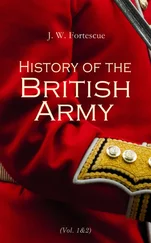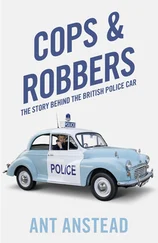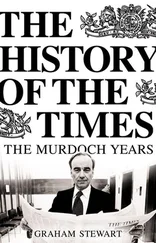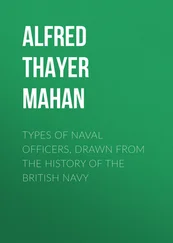The neglect of field artillery in England is the more remarkable inasmuch as English gun-founders enjoyed a high reputation in Europe. The cannon of that day were necessarily heavy and cumbrous, since the bad quality and slow combustion of the powder made great length imperative; but there was no excuse for not imitating the light field-pieces of Gustavus Adolphus. The probable reason for the backwardness of the English was the peculiar organisation of the Dutch artillery, which gave no opening for the instruction of English gunners in the school of the Low Countries. Nevertheless there was a distinct drill for the working of guns, with thirteen words of command for the wielding of ladle and sponge and rammer. A gun's crew consisted of three men—the gunner, his mate, often called a matross, and an odd man who gave general assistance; and the number of little refinements that are enjoined upon them show that the artillerymen took abundant pride in themselves. Thus the withdrawal of the least quantity of powder with the ladle after loading was esteemed a "foul fault for a gunner to commit," while the spilling even of a few grains on the ground was severely reprobated, "it being a thing uncomely for a gunner to trample powder under his feet." Lastly, every gunner was exhorted to "set forth himself with as comely a posture and grace as he can possibly; for the agility and comely carriage of a man in handling his ladle and sponge is such an outward action as doth give great content to the standers-by." Nevertheless artillerymen seem nowhere, and least of all in England, to have been very popular. They had an evil reputation all over Europe for profane swearing, a failing which is attributed by one writer to their enforced commerce with infernal substances, but which was more probably due to the fact that, being less perfectly organised than other branches of the army, they were less amenable to rigid discipline.
But if the gunners were but a casual and ill-administered force, much more so were the drivers. Over a thousand draught-horses were collected for the general use of the New Model, but how many, if any, of these were set apart for the artillery, it is impossible to say. Ordinary waggoners with their teams were impressed or hired to haul the guns, and it is recorded that the hackney-coachmen of London performed the duty more than once. The chief use of the escort of infantry was therefore to prevent the drivers from running away. It is doubtful whether the guns themselves travelled on four wheels or on two, contemporary drawings showing instances of both; but in either case there was no approach to what is now called the limber, the horses being harnessed simply to the trail.[169] The ammunition again was transported in ordinary waggons, the powder being indeed occasionally made up into cartridges, but more often carried simply in barrels which were unloaded behind the gun when it was posted for action. It was the function of the odd man of the gun's crew to cover up the powder-barrel between each discharge of the gun, to avert the danger of a general explosion. In fact, one principal link alone connects the artillery of the New Model with the artillery of to-day, the gun-carriages were painted of a fair lead-colour.
Lastly we come to the Engineers, a corps which is more obscure to us even than the Artillery. Even in the days of the Plantagenets the English kings had taken Cornish miners with them for their sieges; and in the war of Dutch Independence Yorkshire colliers were specially employed for the digging of mines. But, although by the middle of the sixteenth century the Germans had already organised a corps of sappers,[170] no such thing existed in England. In truth, the British were not fond of the spade. The English indeed handled it often enough under Vere and his successors, while the Scots, though sorely against the grain, were forced to do the like by Gustavus Adolphus. But considering the schools wherein the British were trained, nothing is more remarkable in the Civil War than the neglect of field-fortification and the extreme inefficiency with which at any rate the earlier sieges were conducted. It is significant that the pioneers,[171] who are the only men that we hear of in connection with the unorganised corps of engineers, were the very scum of the army, and that degradation to be "an abject pioneer" was a regular punishment for hardened offenders. It is still more significant that the principal engineers of the New Model Army bear not English but foreign names.
So much for the various branches of the military service: it remains to say a few words of the Army as a whole. Of the organisation of what would now be called the War Department, it is extremely difficult to speak. There was a parliamentary Committee of the Army, which seems to have enjoyed at first an intermittent and later a continuous existence, and which was entrusted with the general direction of its affairs and in particular with the business of recruiting. There were also Treasurers at War, who were charged with the financial administration, and there was the already venerable Office of Ordnance, which was responsible for arms and equipment. Speaking generally, though the functions of the Committee and of the treasurers seemed to have overlapped each other at various points, the military administration seems to have tended to the following allocation of responsibility: that the Committee of the Army took charge of the men, the Office of Ordnance of the weapons and stores, and the Treasurers at War of the finance, while the Commander-in-Chief was answerable for the discipline of the Army.
Passing next to purely military organisation, which of course fell within the province of the Lord-General, it is to be remarked that the makers and commanders of the New Model knew of no better distribution of command than under the three heads of Infantry, Cavalry, and Train. There was no such thing as a division comprehending a proportion of all three arms under the control of a divisional commander; and though we do hear frequently of brigades, the word signifies merely the temporary grouping of certain corps under a single officer, rarely an essential part of the general organisation. The subjoined list gives a tolerable idea of the allotment of functions among the members of the staff. It is only necessary to add that all orders of the commander-in-chief were issued through the sergeant-major-general, distributed by him to the sergeant-majors or, as they are now called, majors of the different regiments, and by the sergeant-majors in their turn to the sergeants of every company and the corporals of every troop.
Commander-in-Chief.
His Excellency Sir Thomas Fairfax, Knight, Captain-General.
Headquarter Staff.
(Chief of the Staff)—Major-General[172] Skippon. Commissary-General of the Musters.—Comm.-Gen. Stone (with two deputies). Commissary-General of Victuals.—Comm.-Gen. Orpin. Commissary-General of Horse Provisions.—Comm.-Gen. Cooke. (Transport) Waggon-Master-General.—Master Richardson. (Intelligence) Scout-Master-General.—Major Watson. (Military Chest) Eight Treasurers at War (civilians), (with one deputy). Judge Advocate-General.—John Mills (civilian).
( Medical ) Physicians to the Army. —Doctors Payne and Strawhill. " Apothecary to the Army. —Master Web. " Chaplain to the Army. —Master Boles.
(Military Secretary) Secretary to the Council of War.—Mr.
John Rushworth (civilian), with two clerks.
(Aides-de-Camp) Messengers to the Army.—Mr. Richard
Chadwell, Mr. Constantine Heath.
Foot.[173]
| Major-General |
Skippon. |
| Quartermaster-General |
Spencer. |
| Assistant-Quartermaster-General |
Master Robert Wolsey. |
| Adjutant-General |
Lieutenant-Colonel Gray. |
| Marshal-General |
Captain Wykes. |
Ten regiments of foot; each regiment of ten companies; each company of one hundred and twenty men, exclusive of the officers.
Читать дальше












